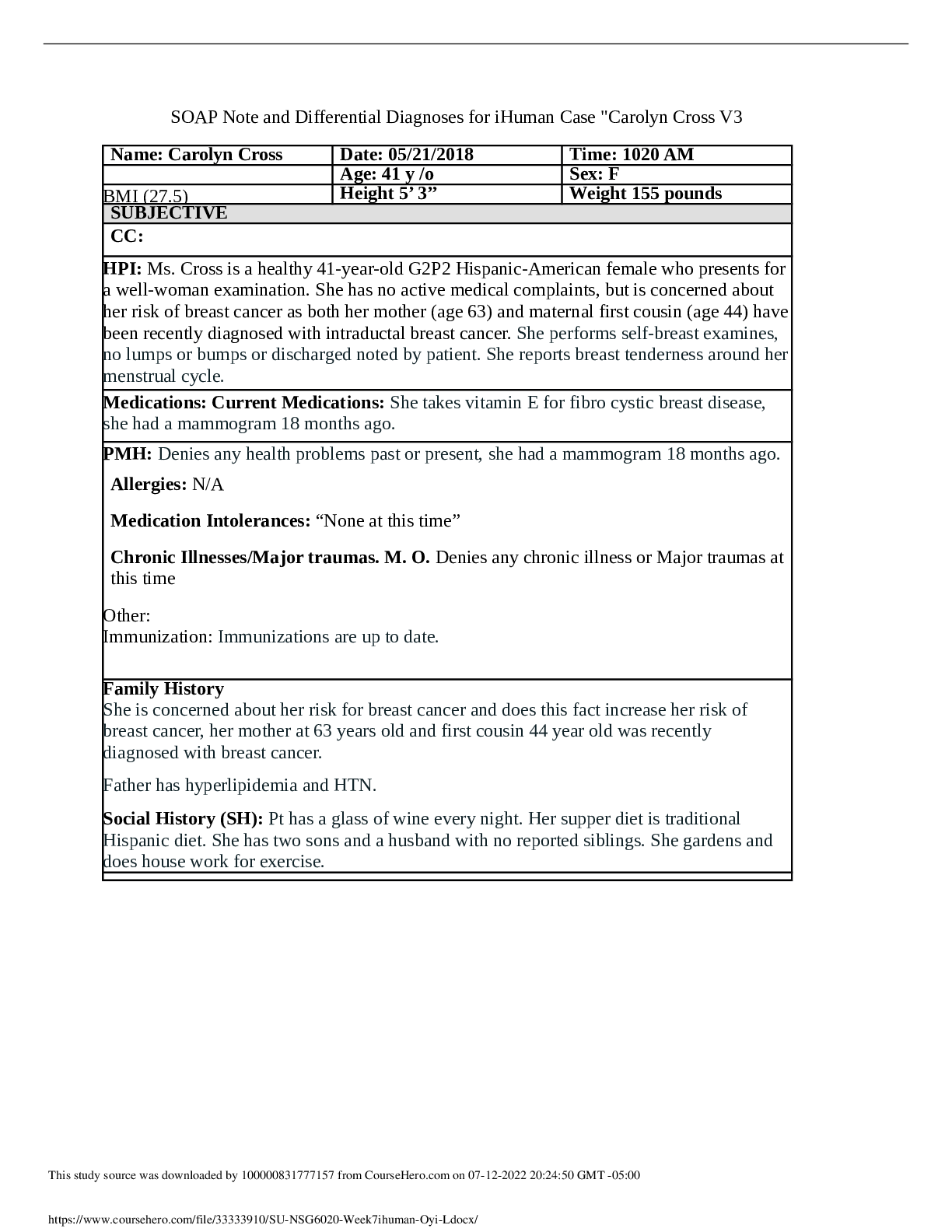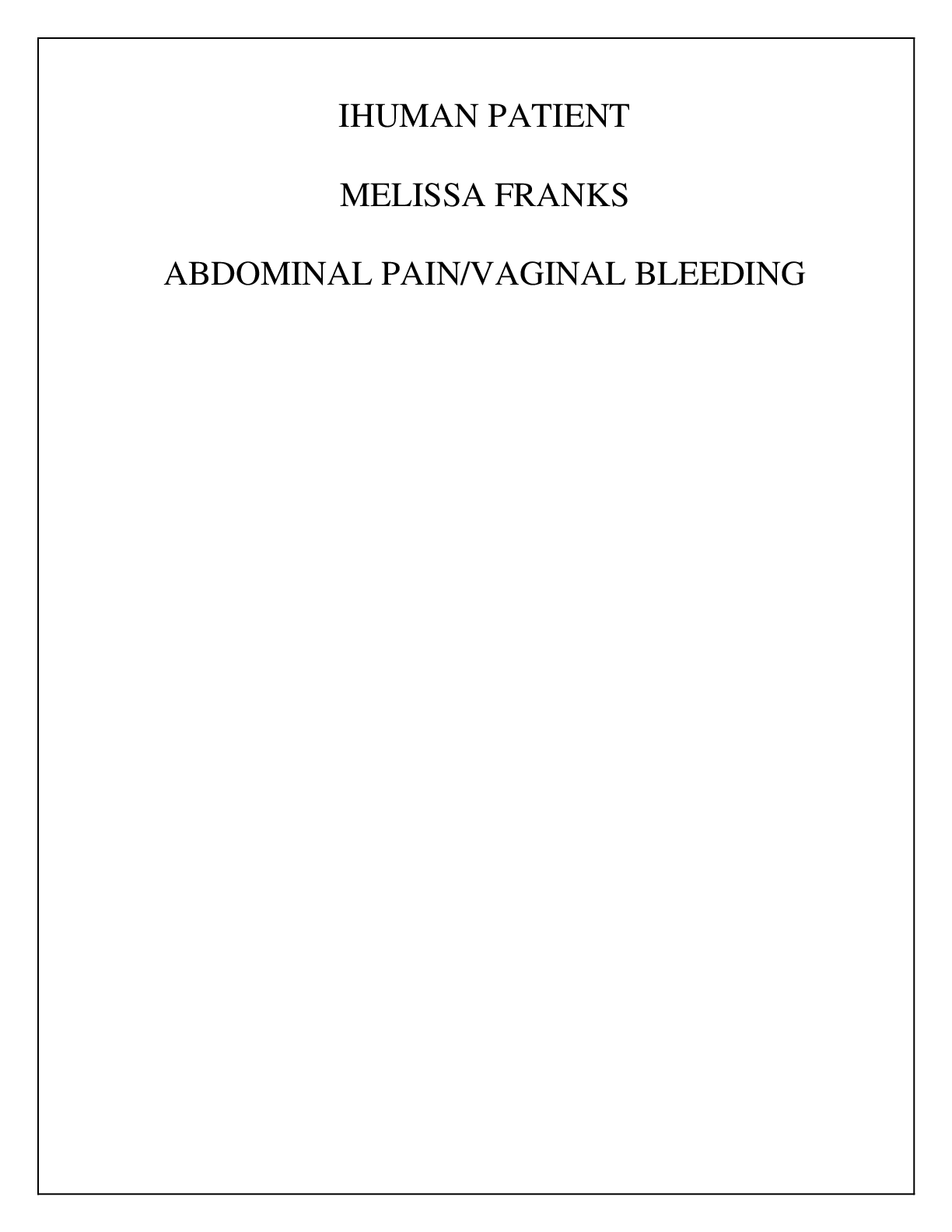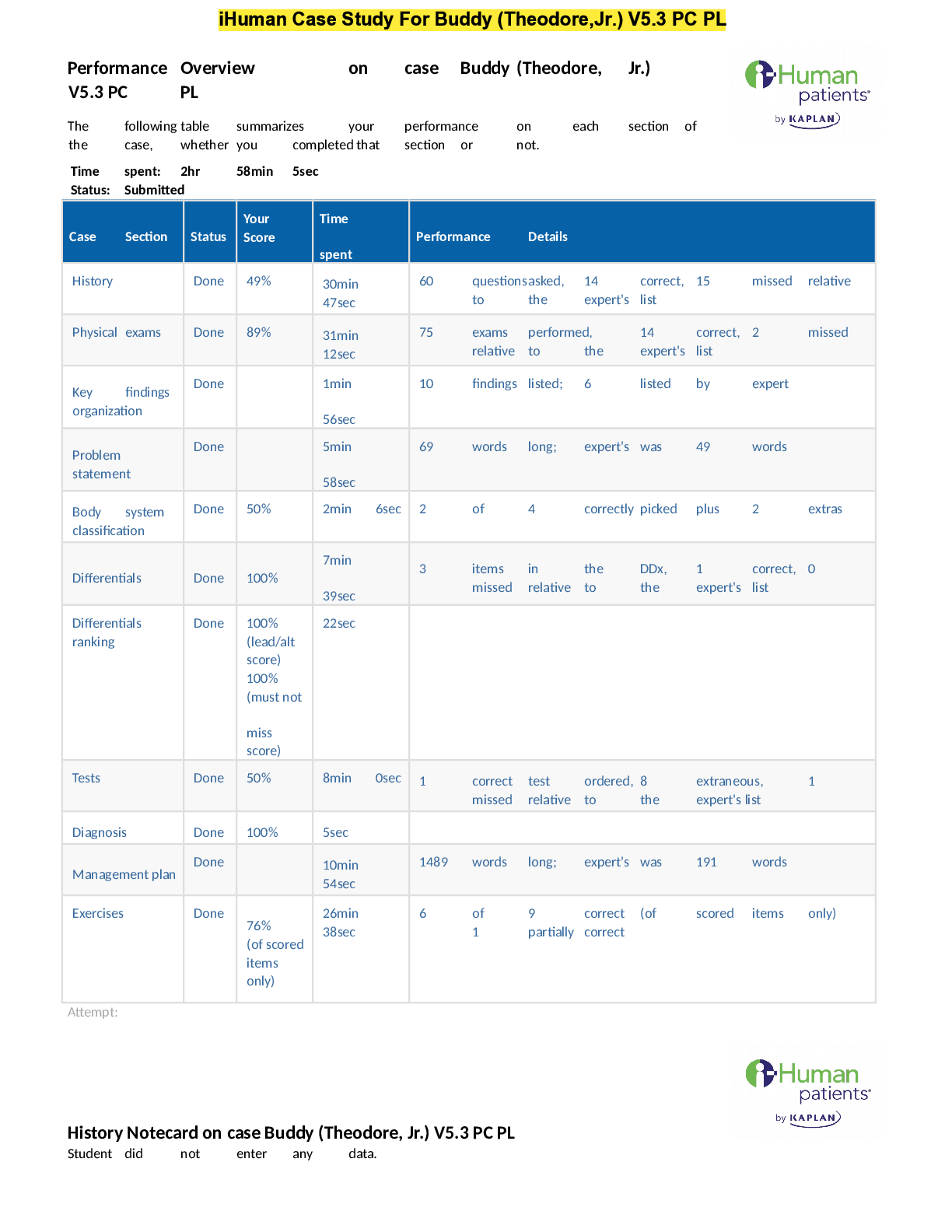RNSG 2022 Heart_Failure-SKINNY_Reasoning (1) Latest,100% CORRECT
Document Content and Description Below
RNSG 2022 Heart_Failure-SKINNY_Reasoning (1) Latest Part I: Recognizing RELEVANT Clinical Data History of Present Problem: JoAnn Smith is a 72-year-old woman who has a history of myocardial infar... ction (MI) four years ago and systolic heart failure secondary to ischemic cardiomyopathy with a current ejection fraction (EF) of only 15%. She presents to the emergency department (ED) for shortness of breath (SOB) the past three days. Her shortness of breath has progressed from SOB with activity to becoming SOB at rest. The last two nights she had to sleep in her recliner chair to rest comfortably upright. She is able to speak only in partial sentences and then has to take a breath when talking to the nurse. She has noted increased swelling in her lower legs and has gained six pounds in the last three days. She is being transferred from the ED to the cardiac step-down where you are the nurse assigned to care for her. Personal/Social History: JoAnn is a retired math teacher who is unable to maintain the level of activity she has been accustomed to because of the progression of her heart failure the past two years. She has struggled with depression the past two years and has been more withdrawn since her husband of 52 years died unexpectedly three months ago from a myocardial infarction. What data from the histories is RELEVANT and has clinical significance to the nurse? RELEVANT Data from Present Problem: Clinical Significance: -Ms. Smith’s history of myocardial infarction (MI) from four years ago and systolic heart failure secondary to ischemic cardiomyopathy. -She came into the ER for SOB the past 3 days which has now went from SOB during activity to SOB at rest. -The only way she has been able to rest comfortably is by sleeping upright in her recliner. She can only speak partial sentences before having to take a breath in order to have a conversation with the nurse. -Increased swelling in the lower legs and a weight gain of 6 pounds in the past 3 days. -A current ejection fraction (EF) of only 15% supports the indication of heart failure. Anything less than 45-55% supports this claim. -Left-sided heart failure is most likely what is causing the pulmonary edema. The fluid being trapped is affecting her breathing resulting in the SOB. -Orthopnea is often associated with the progression of left-sided heart failure. -Edema is present here. This is an indicator that left-sided heart failure is beginning to affect the right side. RELEVANT Data from Social History: Clinical Significance: -JoAnn can no longer tolerate the level of activity she’s used to due to dealing with the progression of her heart failure for the past two years. -The fact that she has been battling depression over the past two years and losing her husband not too long ago has caused her to withdraw even more. This study source was downloaded by 100000802531269 from Co -Her activity intolerance is secondary to the progression of heart failure. -The death of her husband added to her inability to effectively cope with and find ways to overcome her depression. Instead, it caused her to push back even further. urseHero.com on 09-12-2022 07:55:08 GMT -05:00 Patient Care Begins: Current VS: P-Q-R-S-T Pain Assessment (5th VS): T: 98.6 F/37.0 C (oral) Provoking/Palliative: P: 92 (irregular) Quality: Denies Pain R: 26 (regular) Region/Radiation: BP: 162/54 MAP: 90 Severity: O2 sat: 90% (6 liters n/c) Timing: What VS data is RELEVANT and must be recognized as clinically significant by the nurse? RELEVANT VS `Data: Clinical Significance: -A pulse of 92 (irregular) -26 breaths/minute (regular) -BP 162/54 -O2 sat of 90% 6 L via nasal cannula -Atrial fibrillation can cause this to be considered irregular -Way too fast for this to be her respiratory rate at rest - During heart failure the higher the BP higher the afterload which increases the overall workload of the heart -90% is too low Current Assessment: GENERAL APPEARANCE: Appears anxious, restless RESP: Breath sounds have coarse crackles scattered throughout both lung fields ant/post, labored respiratory effort, patient sitting upright CARDIAC: Rhythm: atrial fibrillation, pale, cool to the touch, pulses palpable throughout, 3+ pitting edema lower extremities from knees down bilaterally, S3 gallop, irregular, no jugular venous distention (JVD) noted NEURO: Alert and oriented to person, place, time, and situation (x4) GI: Abdomen soft/nontender, bowel sounds audible per auscultation in all four quadrants GU: Voiding without difficulty, urine clear/yellow SKIN: Skin integrity intact, skin turgor elastic, no tenting present What assessment data is RELEVANT and must be recognized as clinically significant by the nurse? RELEVANT Assessment Data: Clinical Significance: -Appears anxious, restless -Scattered coarse crackles throughout both lungs, labored respiratory effort -Atrial fibrillation, pale/clammy to the touch This study source was downloaded by 100000802531269 fr -Must determine is this a result of SOB or underlying anxiety -Increased pressure from left sided failure increase pressure in alveoli pushing fluid in the alveoli space -Should be determined if this is a result of a past or current cause? om CourseHero.com on 09-12-2022 07:55:08 GMT -05:00 -3+ pitting edema in lower extremities from knees down bilaterally -S3 gallop -Edema indicates right-sided heart failure -S3 ventricular gallop is associated with left-sided heart failure Cardiac Telemetry Strip: Interpretation: -Rate-110 bpm -Rhythm-irregular -Type of rhythm- atrial fibrillation Clinical Significance: -Dysrhythmias are seen in cases of right-sided heart failure TDhis sitaudgy snouorceswtaiscdoRwnleoasdeud blyt1s0:0000802531269 from CourseHero.com on 09-12-2022 07:55:08 GMT -05:00 Basic Metabolic Panel (BMP) Na K Gluc. Creat. Current: 133 4.9 105 2.9 Most Recent: 138 4.2 118 2.2 Complete Blood Count (CBC) WBC % Neuts HGB PLTs Current: 4.8 68 12.9 228 Most Recent: 5.8 65 13.2 202 Cardiac Trop. BNP Mg PT/INR Current: 0.10 1855 1.9 2.5 Most Recent: 0.12 155 1.8 2.4 Radiology: Chest x-ray Bilateral diffuse pulmonary infiltrates consistent with pulmonary edema – indicates fluid buildup resulting in pulmonary edema also may be contributing to left-sided heart failure. What data must be interpreted as clinically significant by the nurse? (Reduction of Risk Potential/Physiologic Adaptation) RELEVANT Diagnostic Data: Clinical Significance: TREND: Improve/Worsening/Stable: Sodium (Na) 138 Potassium (K) 4.2 Sodium can be secondary to fluid volume excess even though it is within normal Sodium (Na) 133 (Worsening) Potassium (K) 4.9 (Stable) Glucose 105(Improving) Creatine 2.9 (Worsening) WBCs 4.8 (Stable) % Neuts 68 (Stable) HGB 12.9(Stable) PLTs 228 (Stable) Trop. 0.10 (Stable) BNP1855 (Worsening) Mg 1.9 (Stable) PT/INR 2.5 (Stable) Glucose 118 Creatine 2.2 WBCs 5.8 % Neuts 65 HGB 13.2 PLTs 202 range it is decreasing. Creatine is too high and progressive renal failure is a direct result. BNP is an indicator of heart failure in this scenario. Trop. 0.12 BNP155 Mg 1.8 PT/INR 2.4 Part II: Put it All Together to THINK Like a Nurse! 1. After interpreting relevant clinical data, what is the primary problem? (Management of Care/Physiologic Adaptation) Problem: Pathophysiology in OWN Words: - Left-sided heart failure -Right-sided heart failure -Biventricular failure This study source was download -Left-sided heart failure happens when the left ventricle fails to maintain a normal output of blood. It does not empty completely and as a result blood cannot return from the lungs by way of the pulmonary veins causing them to swell. -Right-sided heart failure occurs when right ventricle cannot contract and push blood into the pulmonary artery. -A direct result of left and right sided heart failure ed by 100000802531269 from CourseHero.com on 09-12-2022 07:55:08 GMT -05:00 Collaborative Care: Medical Management 2. State the rationale and expected outcomes for the medical plan of care. (Pharm. and Parenteral Therapies) Medical Management: Rationale: Expected Outcome: Titrate oxygen to keep O2 sat >92% -Administer supplemental oxygen therapy as prescribed to maintain the pulse oximetry level at or above 90%. - increase sodium excretion and therefore water excretion, but they also increase potassium excretion - improves heart pumping action and maintains blood pressure in severe heart failure -too much fluid in your body can cause weight gain - limiting oral fluid intake reduces circulating volume. - reduced sodium decreases water retention. - client will exhibit a decreased breathing effort Furosemide 40 mg IV push Nitroglycerin IV drip: titrate to keep SBP <130 - fluid volume will be reduced and decrease the workload of the heart as evidenced by weight loss -client will have increased cardiac output Strict I&O -client will maintain a stable weight with no significant change in weight over a couple days’ time span Fluid restriction of 2000 mL PO daily -client will drink no more than 8 glasses of water a day Low sodium diet -client will have no adventitious lung sounds Collaborative Care: Nursing 3. What nursing priority(ies) will guide your plan of care? (Management of Care) Nursing PRIORITY PRIORITY Nursing Interventions: Rationale Expected Outcome -Improve oxygenation, and underlying impaired gas exchange -Decrease cardiac output This study source was downloaded by 100000802531269 from -Impaired gas exchange associated with pulmonary edema also evident by crackles heard in the lungs. - Related to ineffective ventricular contraction, tachycardia, reduced stroke volume, hypertension, and increased vascular volume C-oRureselHaeterod.cotom roen d09u-c12e-d20r2e2n07a:l55:08 GMT -0 -Client will maintain adequate gas exchange as evidenced by clear lung sounds, decreased work of breathing, pulse oximeter reading above 90% - Client will have increased cardiac output as evidenced by maintain a heart rate between 60 and 100 beats/minute, urinary output between 1,500 and 3,000 mL/day, systolic BP below 120 mm Hg, diastolic BP below 80 mm Hg - Fluid volume will be reduced as 5e:v00idenced by reduced weight and - Remove excess fluid function secondary to reduced cardiac output. peripheral edema, a decreased BP within normal limits, increased urine output, and no adventitious lung sounds. 4. What psychosocial/holistic care PRIORITIES need to be addressed for this patient? (Psychosocial Integrity/Basic Care and Comfort) Psychosocial PRIORITIES: PRIORITY Nursing Interventions: Rationale: Expected Outcome: CARING/COMFORT: How can you engage and show that this pt. matters to you? - Clients with this disease process need support to have the best quality of life and comfort. Client care can be offered along with medical interventions or might be the only treatment given based on the client’s decision. It is important to allow the client to voice their opinion and be educated on different avenues in regard to combating an illness. They have the right to be directly involved and collaborate with the healthcare team in regard to decisions made. Physical comfort measures: - Assess client’s pain and its characteristics at least every 2 hours while awake and 30 minutes after implementing a pain management technique. Also, Determine client’s choice for pain relief techniques from among those available. -Breathing exercises -Massages - Promote laughter by suggesting that client relate a humorous story or watch a video or comedy of his or her choice. - Quick interventions prevent or minimize pain. Encouraging and respect client’s participation in decision making. Suffering contributes to the pain experience and can be reduced by eliminating delays in nursing response. - Breathing aids in anxiety relief - Massage promotes the release of endorphins and enkephalins that moderate the sensation. - Laughter promote a feeling of well-being. -Helps to make a more accurate diagnosis, and thus establish the most beneficial treatment plan for patients presenting with pain. -The client’s stress and anxiety will be decreased and they will be more adherent to health promotion aids -Helps to mitigate pain, increase comfort, and preserve function of all major body systems. - Laughter can help lessen depression and anxiety and may make the client feel happier. EMOTIONAL SUPPORT: Principles to develop a therapeutic relationship TBhies isntugdypsaoutirceenwtaas ndodwanllolaodwedinbyg10th00e00c8l0i2e5n3t12to69 fr This allows the nurse and the client identify underlying issues/struggles the client may be dealing with. One’s thoughts and feelings often otmimCoeurasceHceoruo.ncotms foon r09s-o12m-20a2n2 y07p:5e5r:0s8oGnMalT o-0b5s:0t0acles. Help the client determine the cause of emotional issues and erase the feeling of be able to speak/voice their feelings while practicing effective listening skills. Offering pen and paper as an alternative and they cannot fully gather their thoughts. Talking with someone else about it may help an individual cope better and find ways to deal with situations in a positive manner. depression and not knowing how to carry on. SPIRITUAL CARE/SUPPORT: Engage in conversations with the client about various life situations and offer guidance to help lead the client to a better lifestyle. This shows the client that they have the support of the nurse which can lead to a sense of the client feeling more comfortable with opening about who they are and feeling accepted. When you show acceptance towards an individual that warrants positive communication and the feeling of comfort on their end when talking about their emotional needs. A positive nurse-client relationship helps the client be more at ease and be more willing to utilize help resources. 5. What educational/discharge priorities need to be addressed to promote health and wellness for this patient and/or family? (Health Promotion and Maintenance) Heart failure can often be managed at home. Monitoring sodium and practicing a sodium-restricted diet, lifestyle changes, and prescribed medications are often involved in the treatment of heart failure. The main goal is to promote oxygenation and improve the heart’s ability to eject blood efficiently. Fluid volume excess should be monitored, and activities arranged should be within the client’s physical limitations. Lastly, providing support to the client and their family is equally important. [Show More]
Last updated: 1 year ago
Preview 1 out of 17 pages
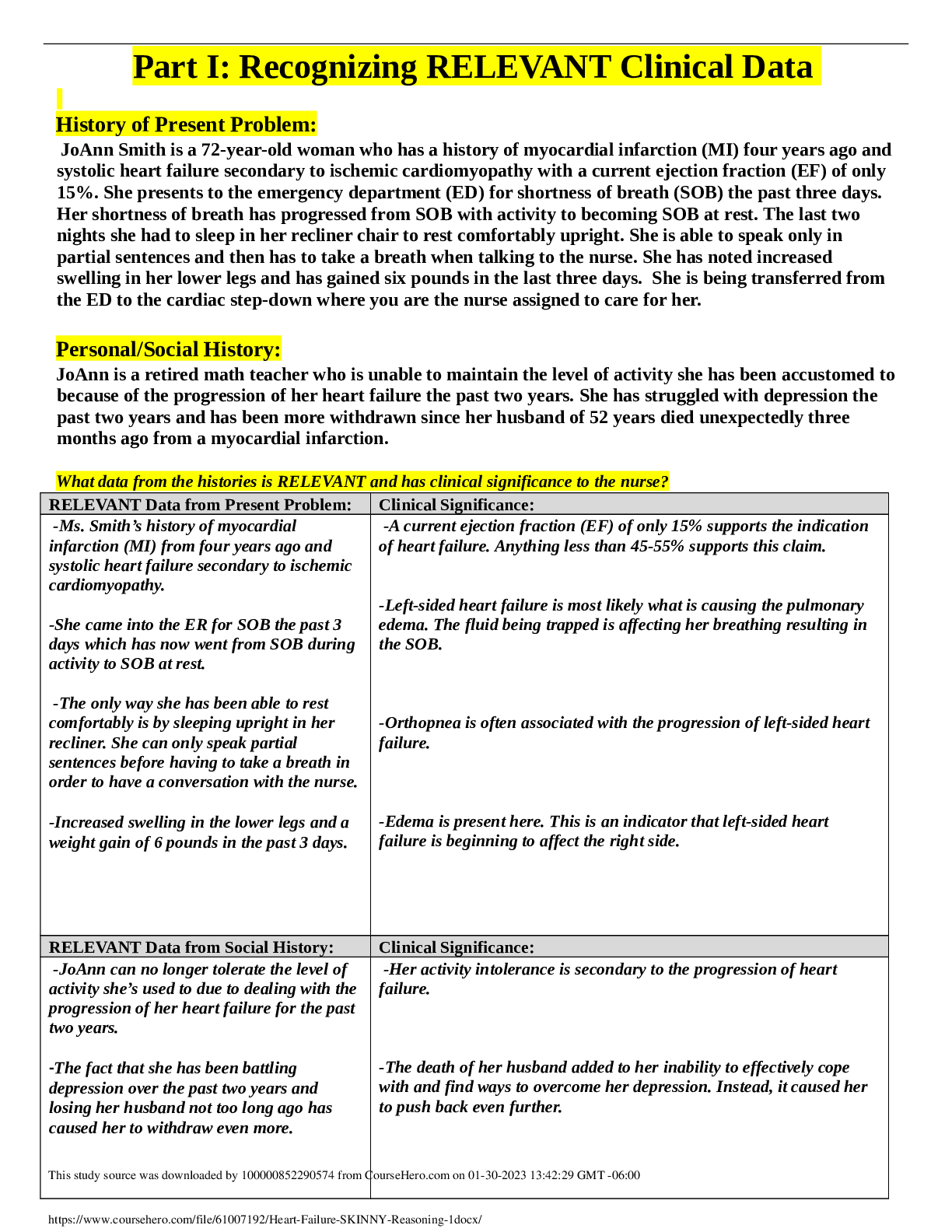
Reviews( 0 )
Document information
Connected school, study & course
About the document
Uploaded On
Sep 22, 2022
Number of pages
17
Written in
Additional information
This document has been written for:
Uploaded
Sep 22, 2022
Downloads
0
Views
38

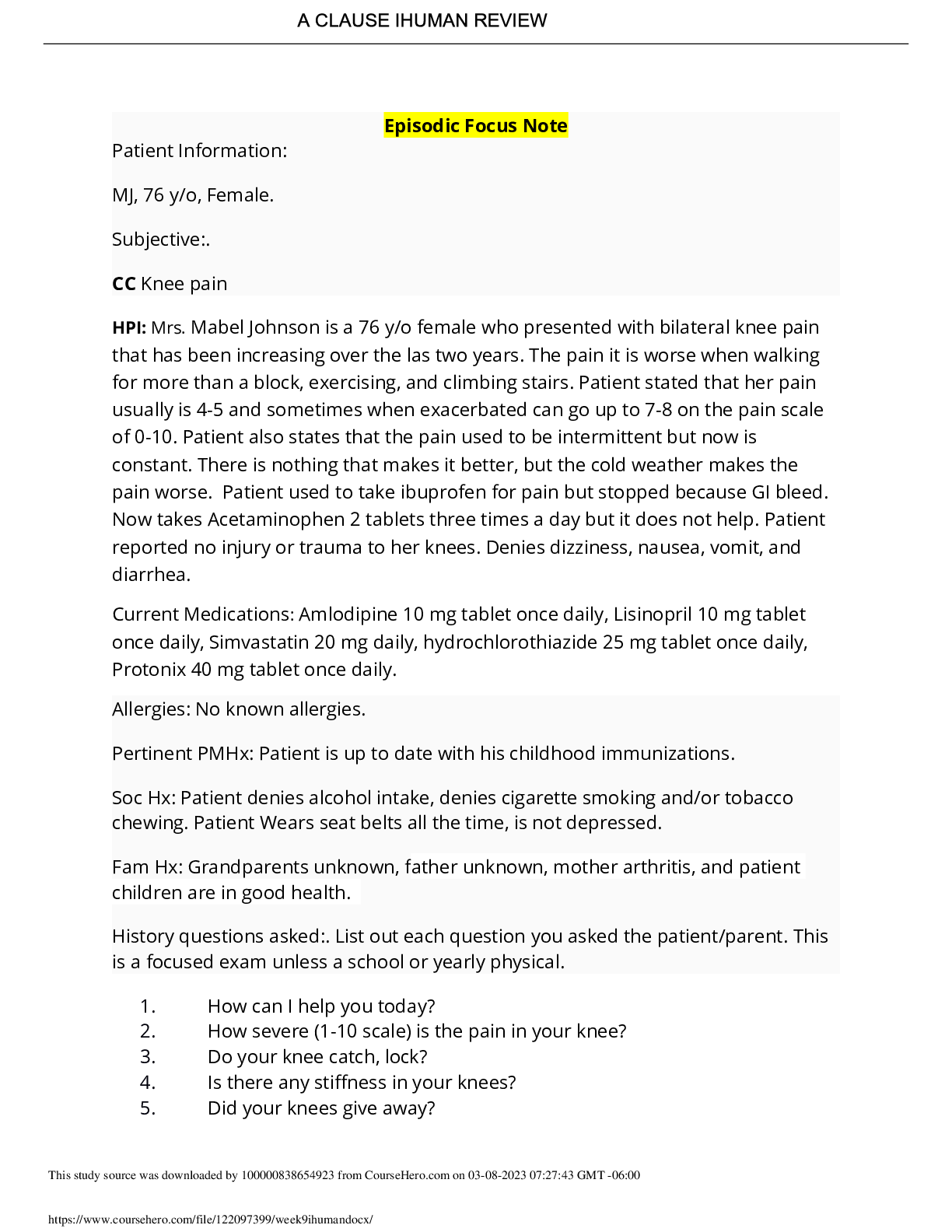
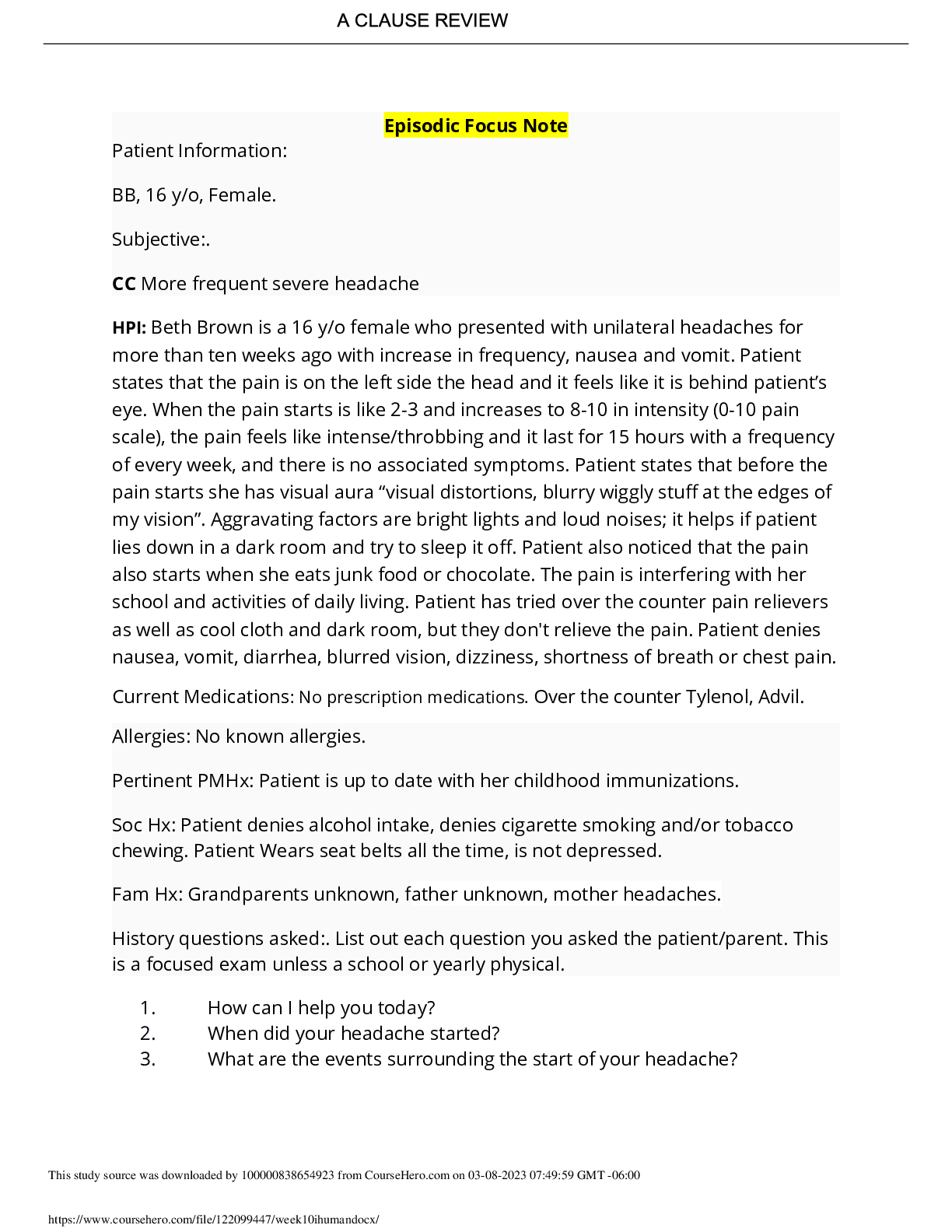


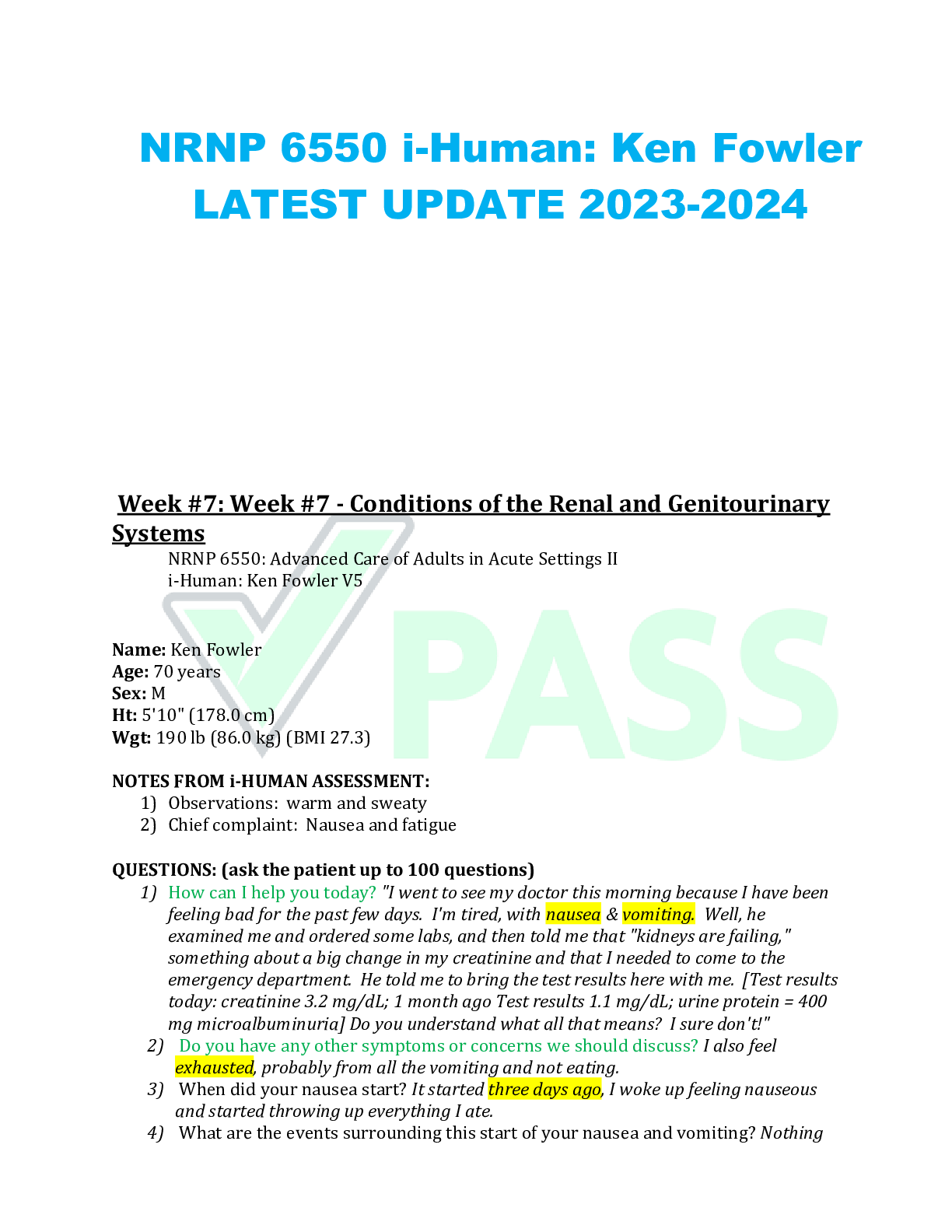
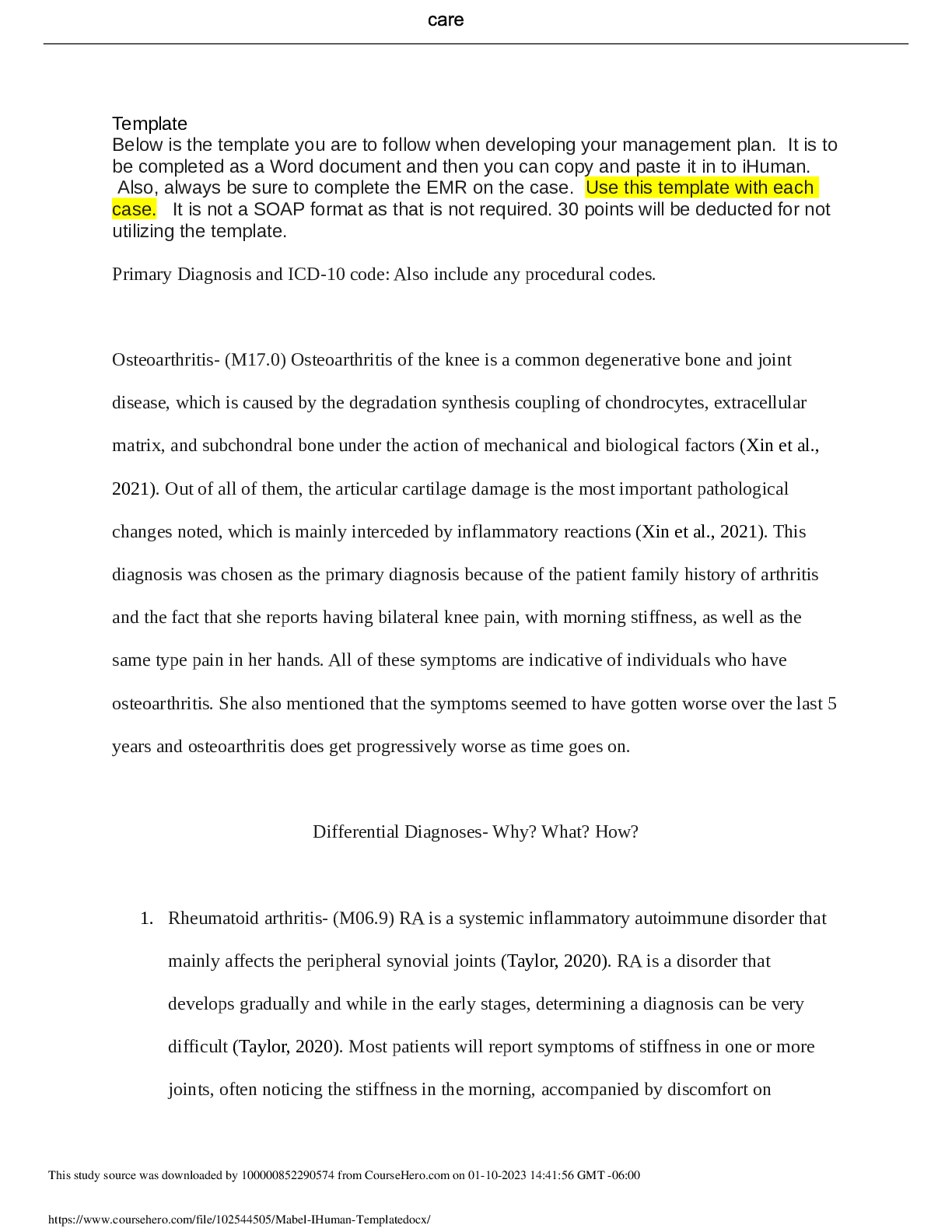



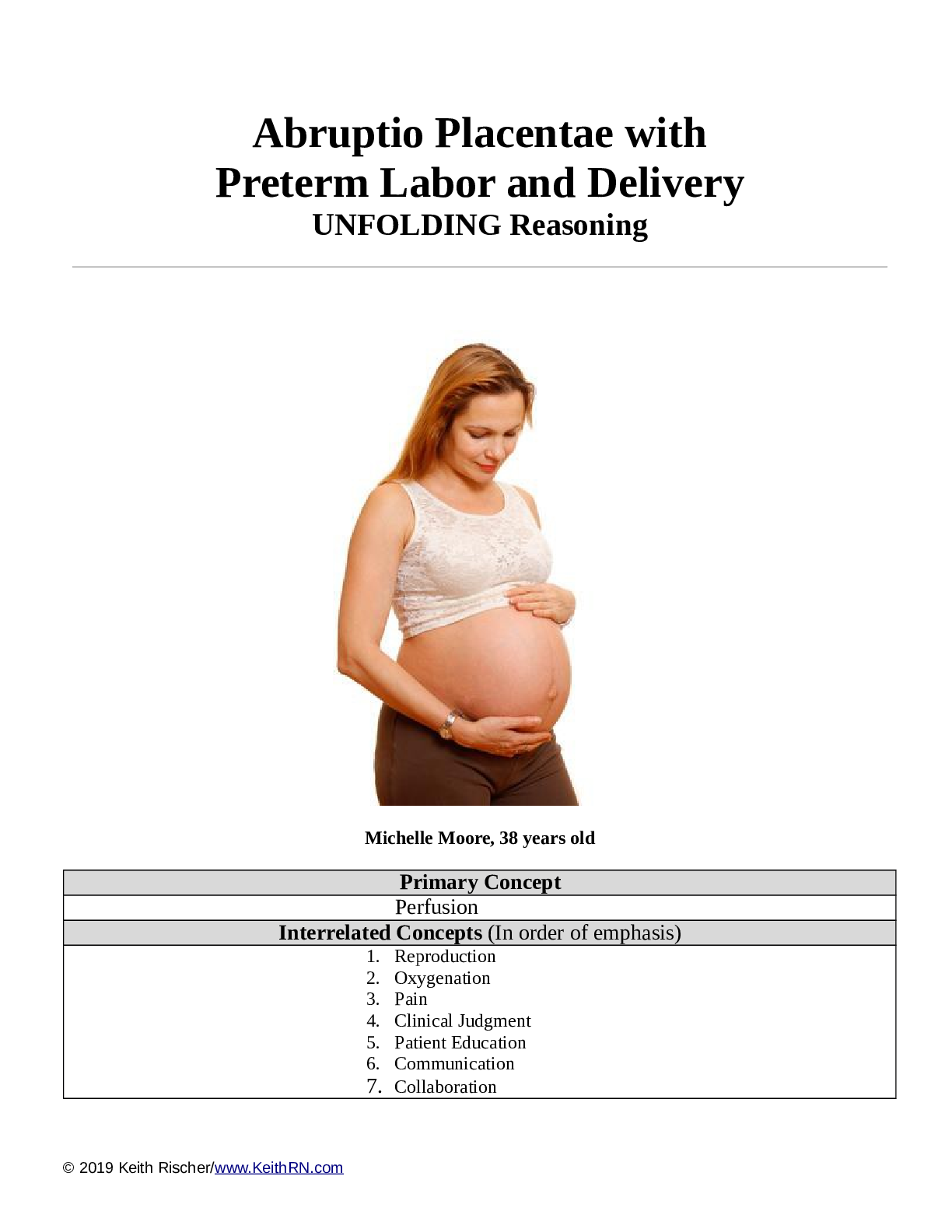
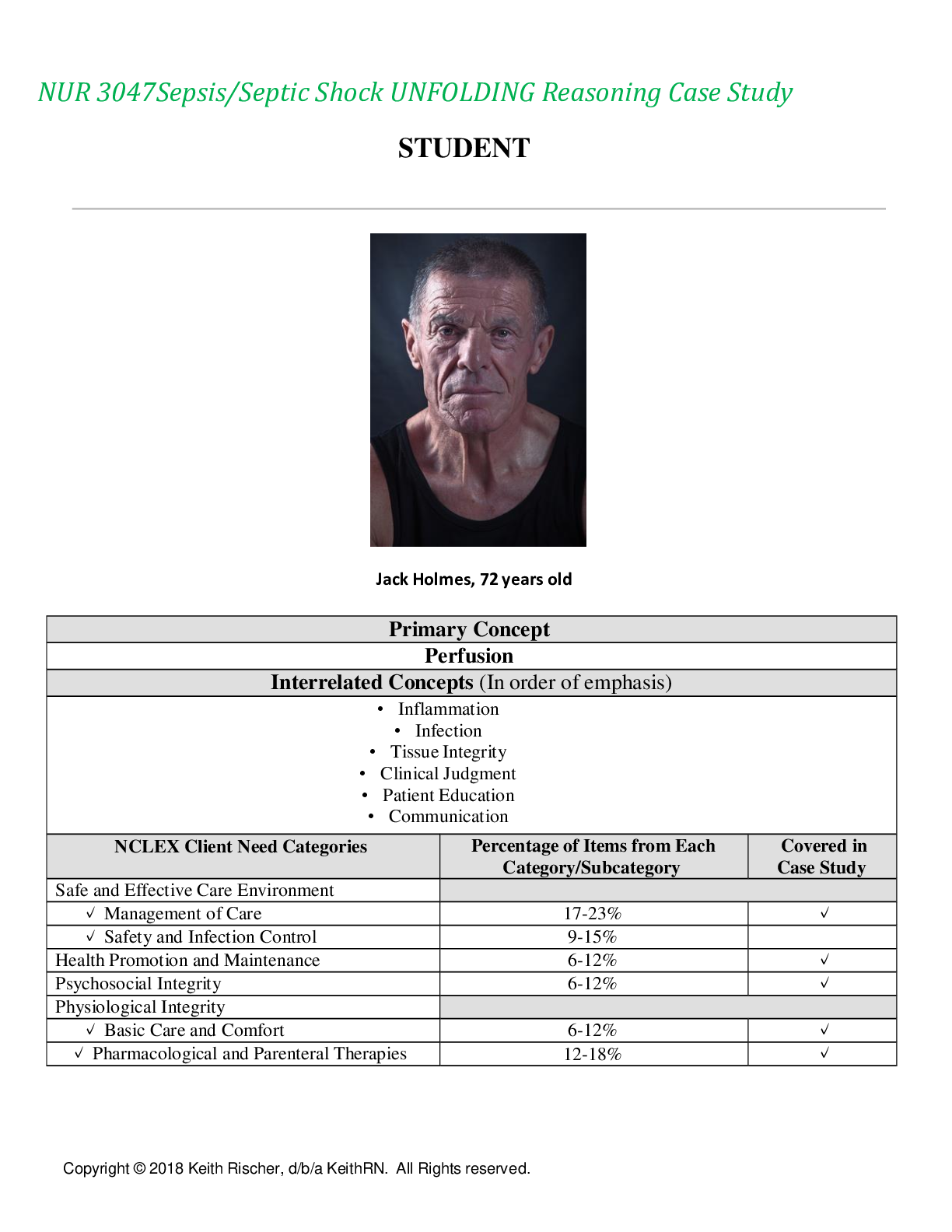
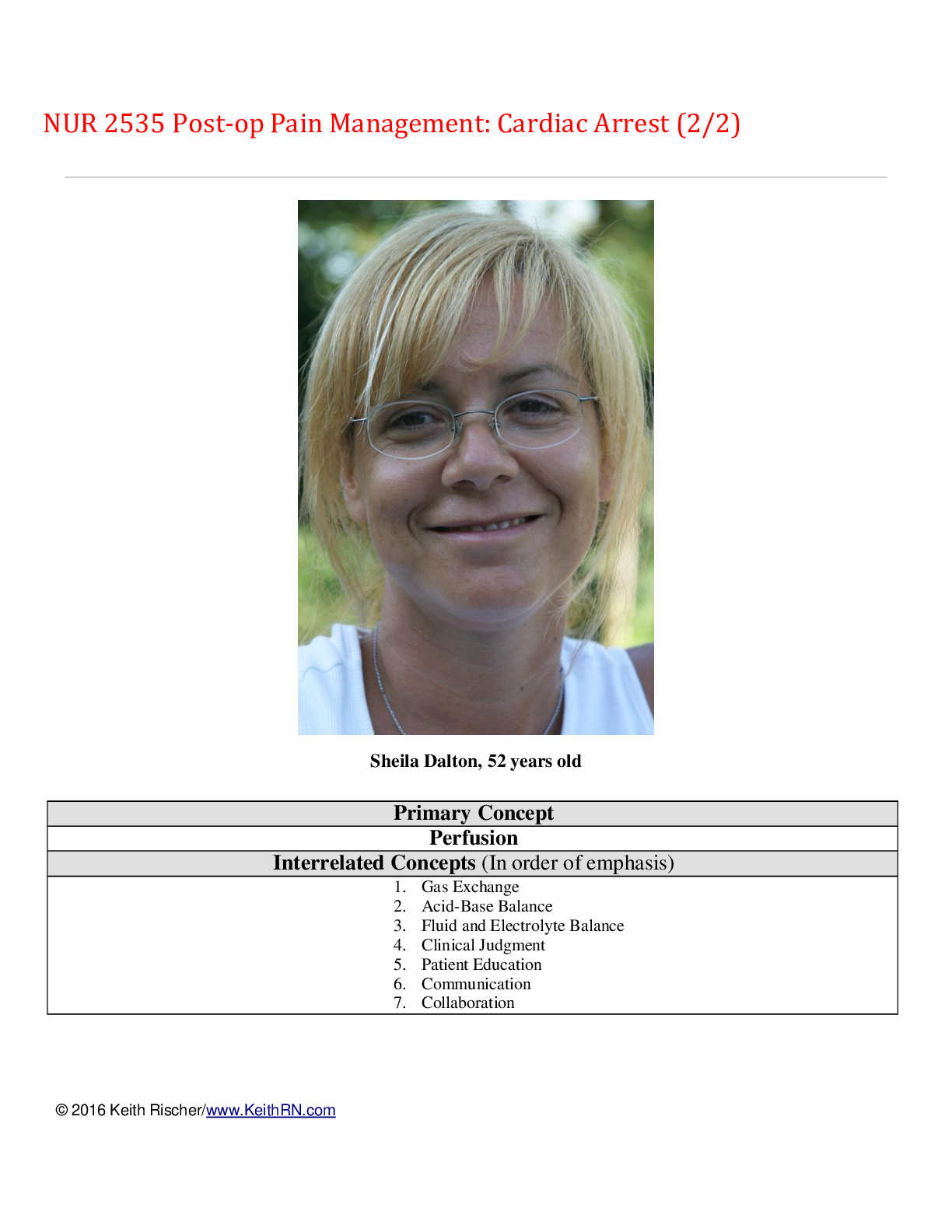

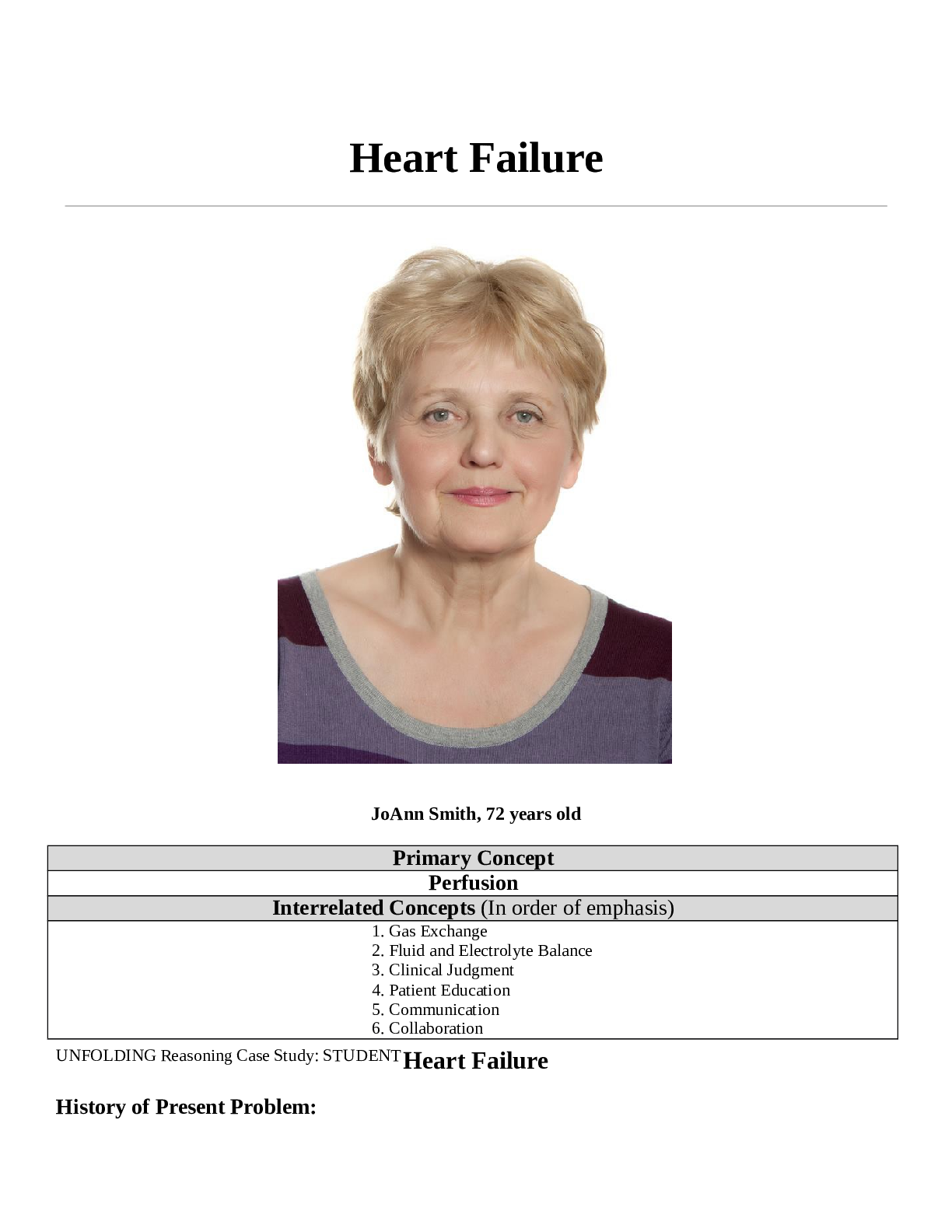

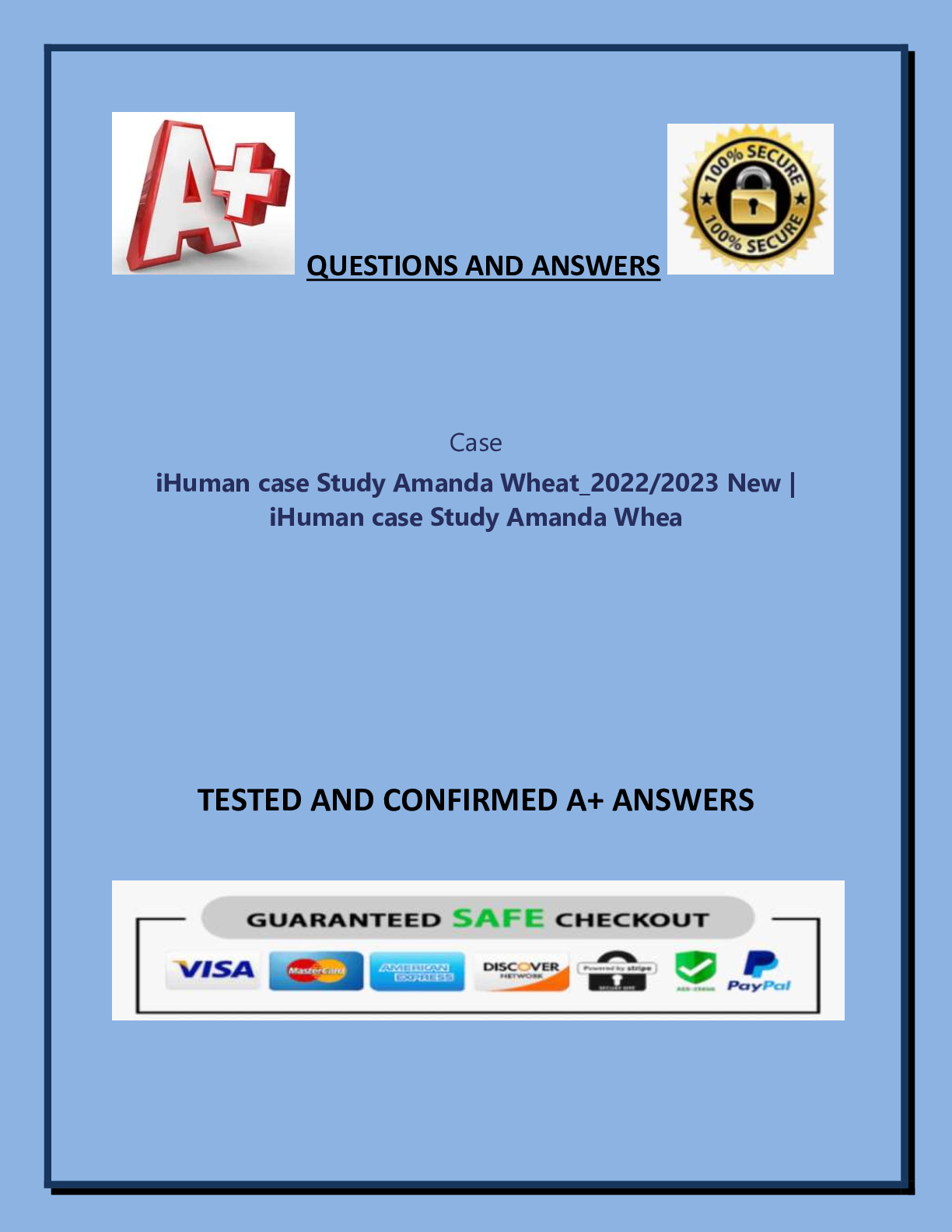
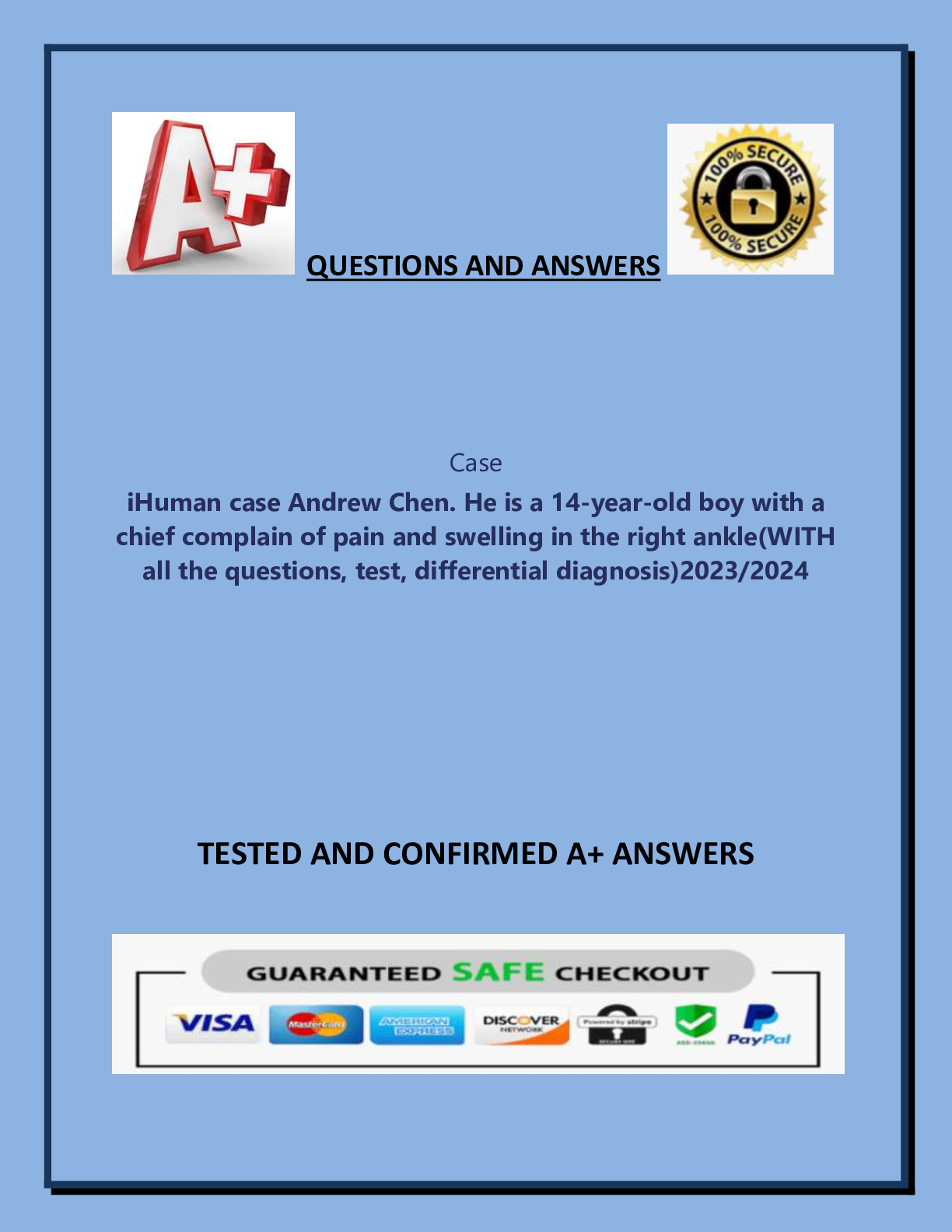
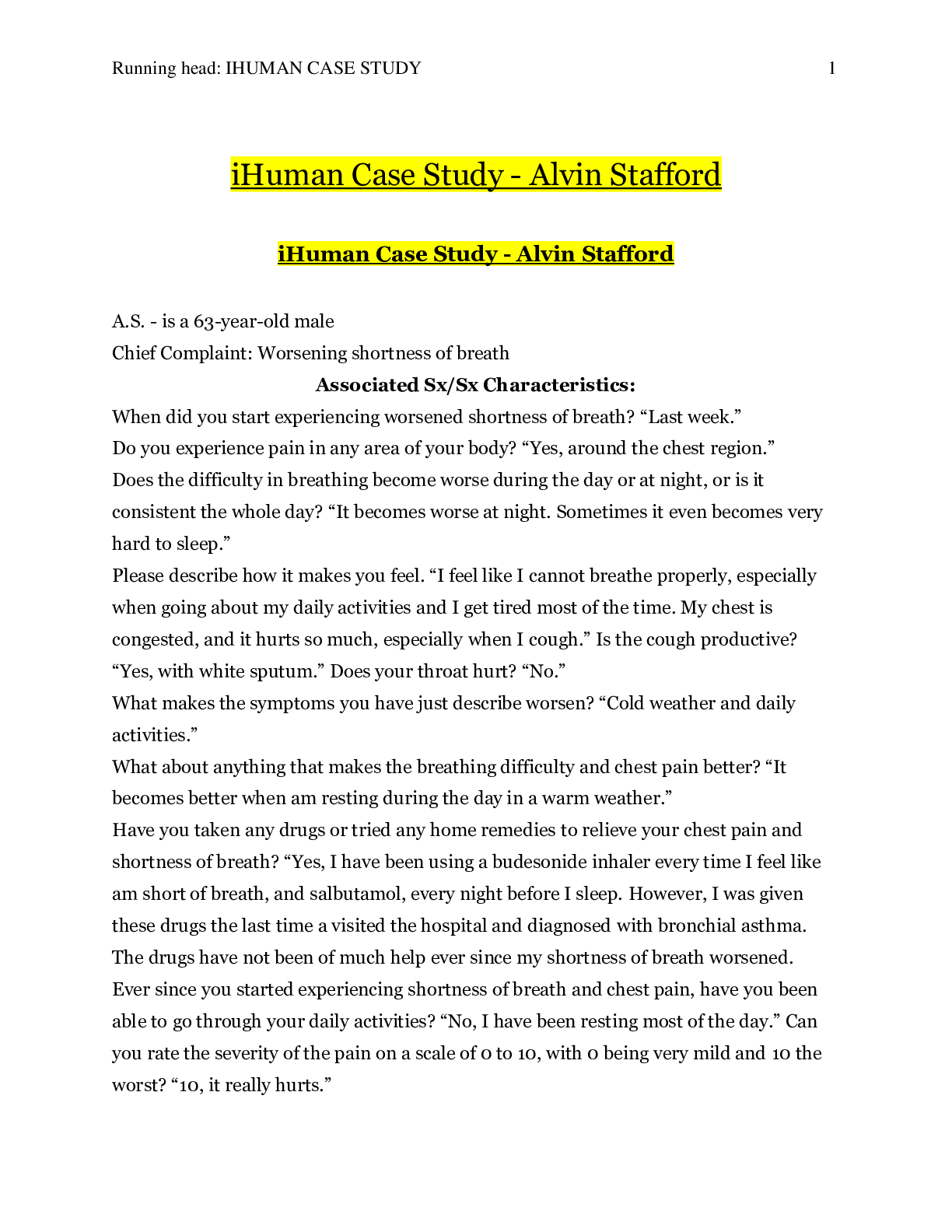

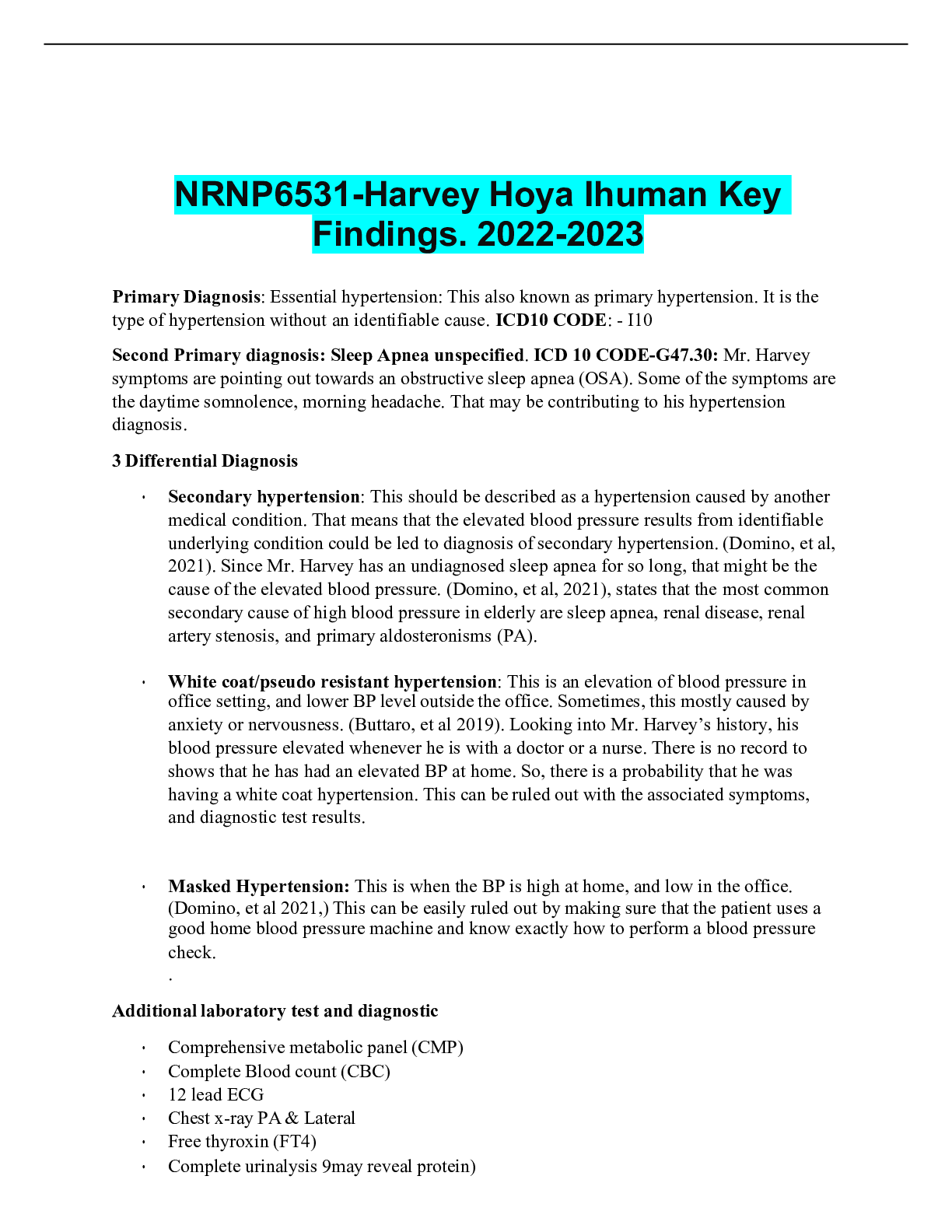
 2021.png)


